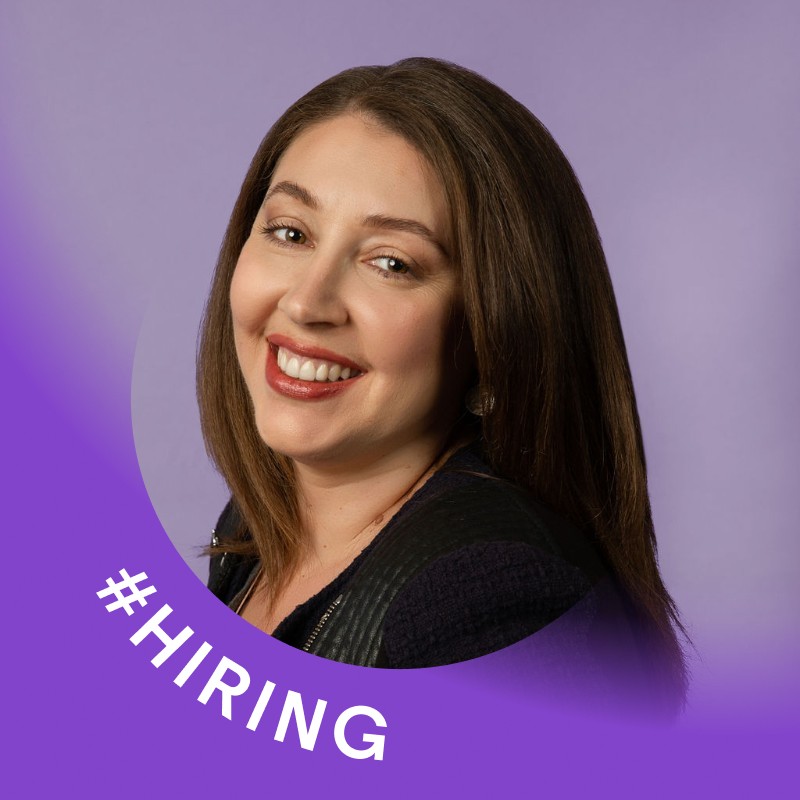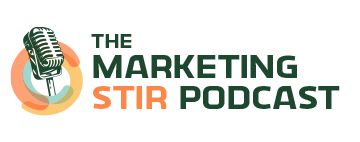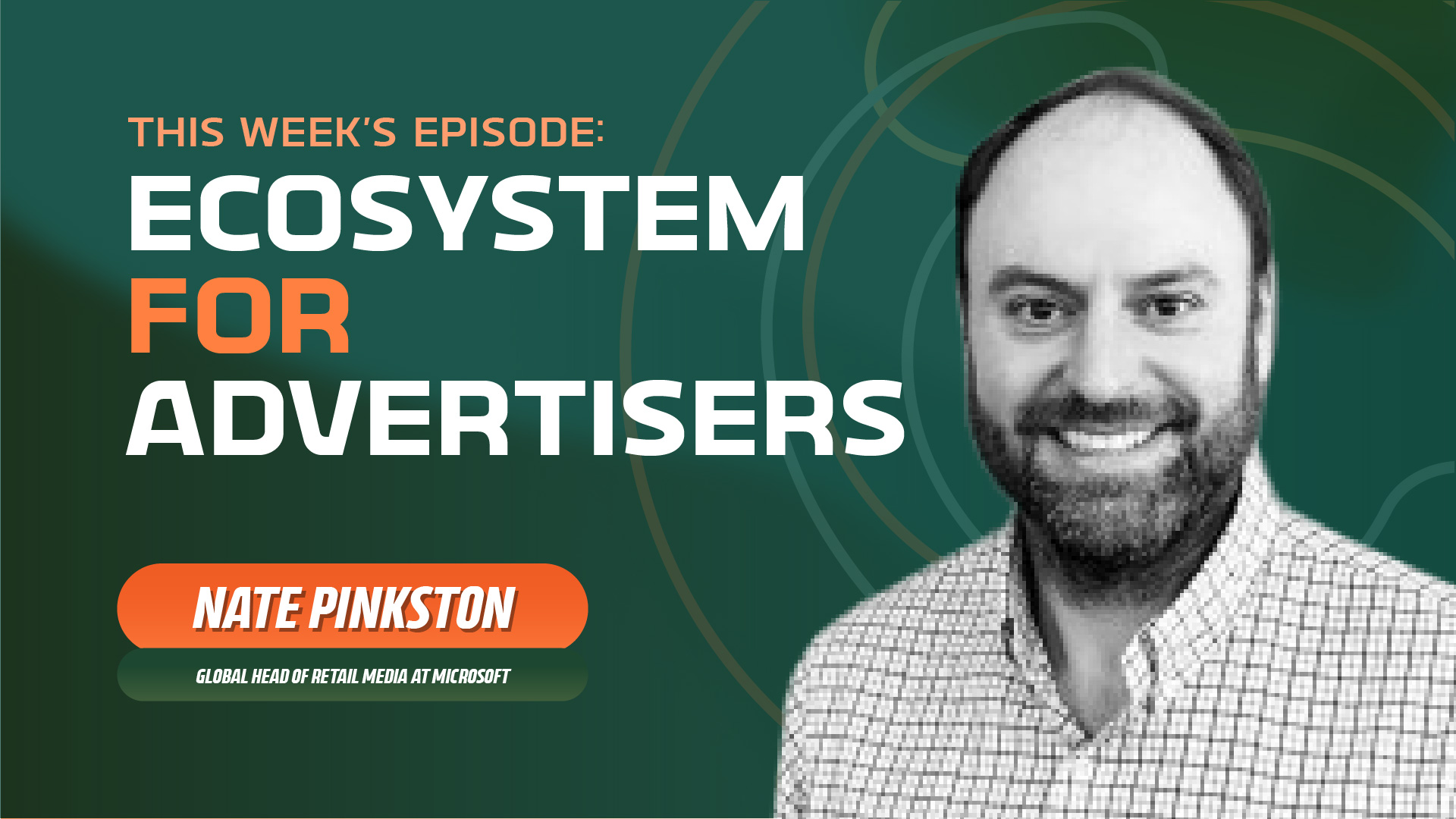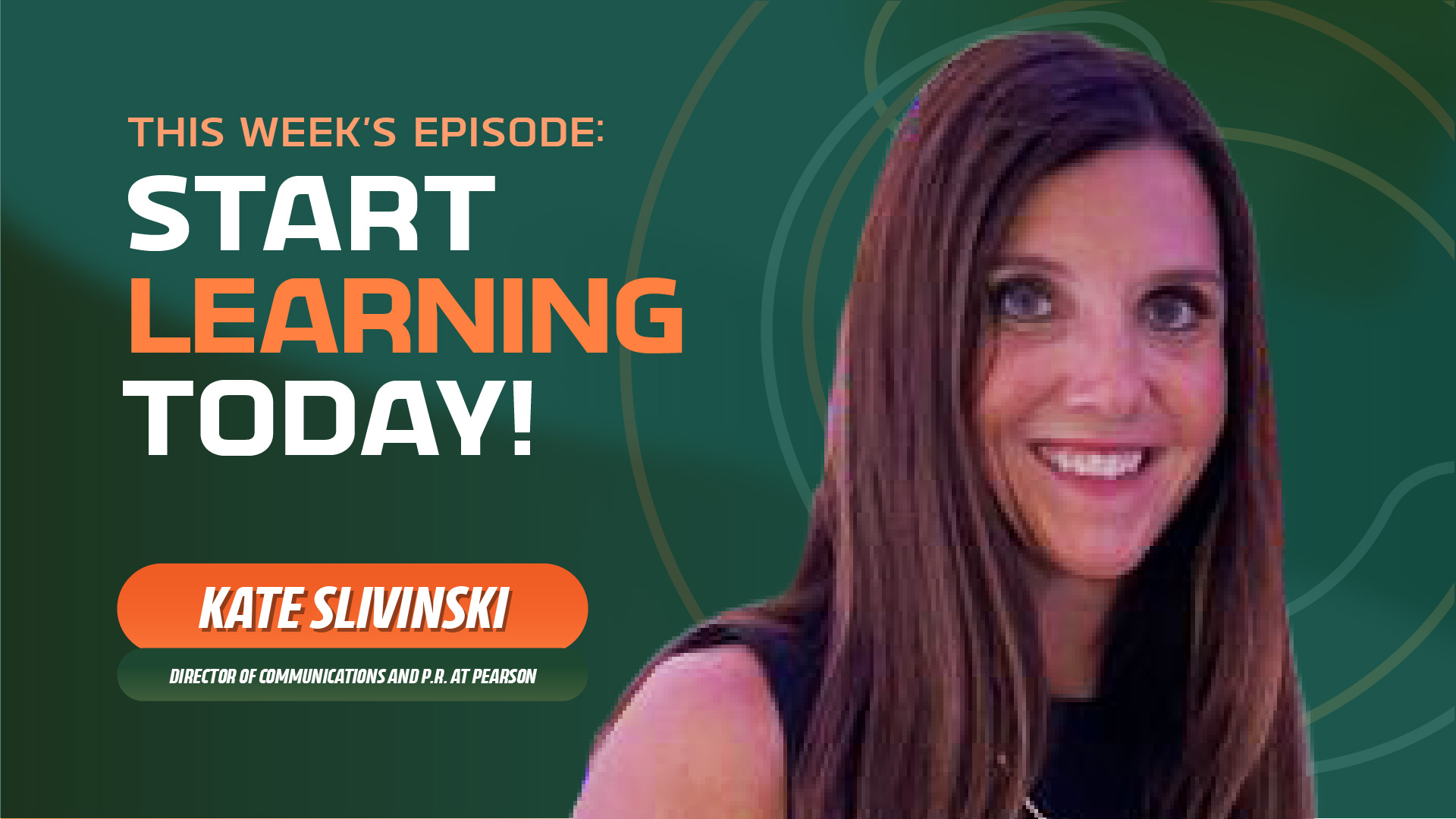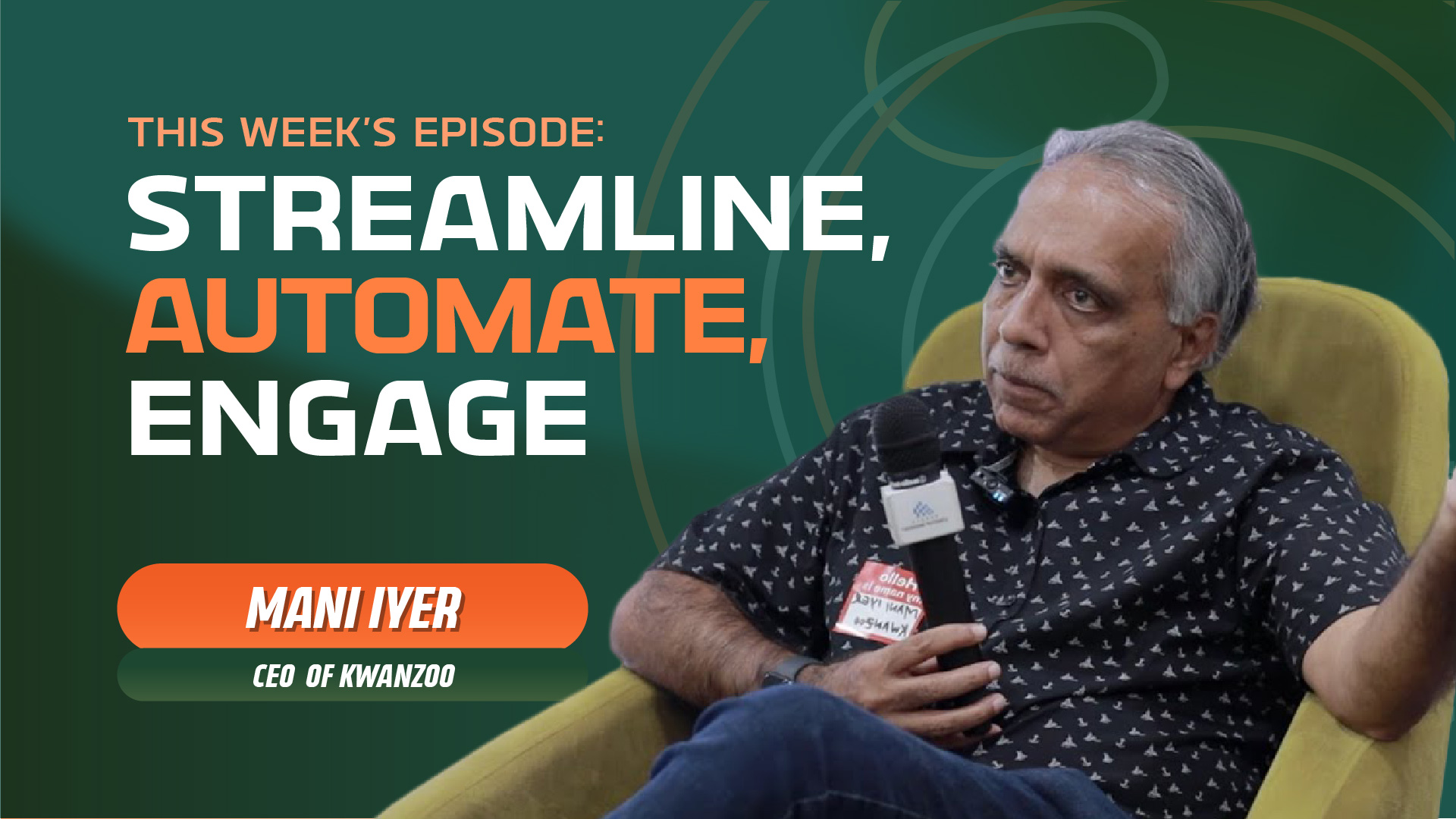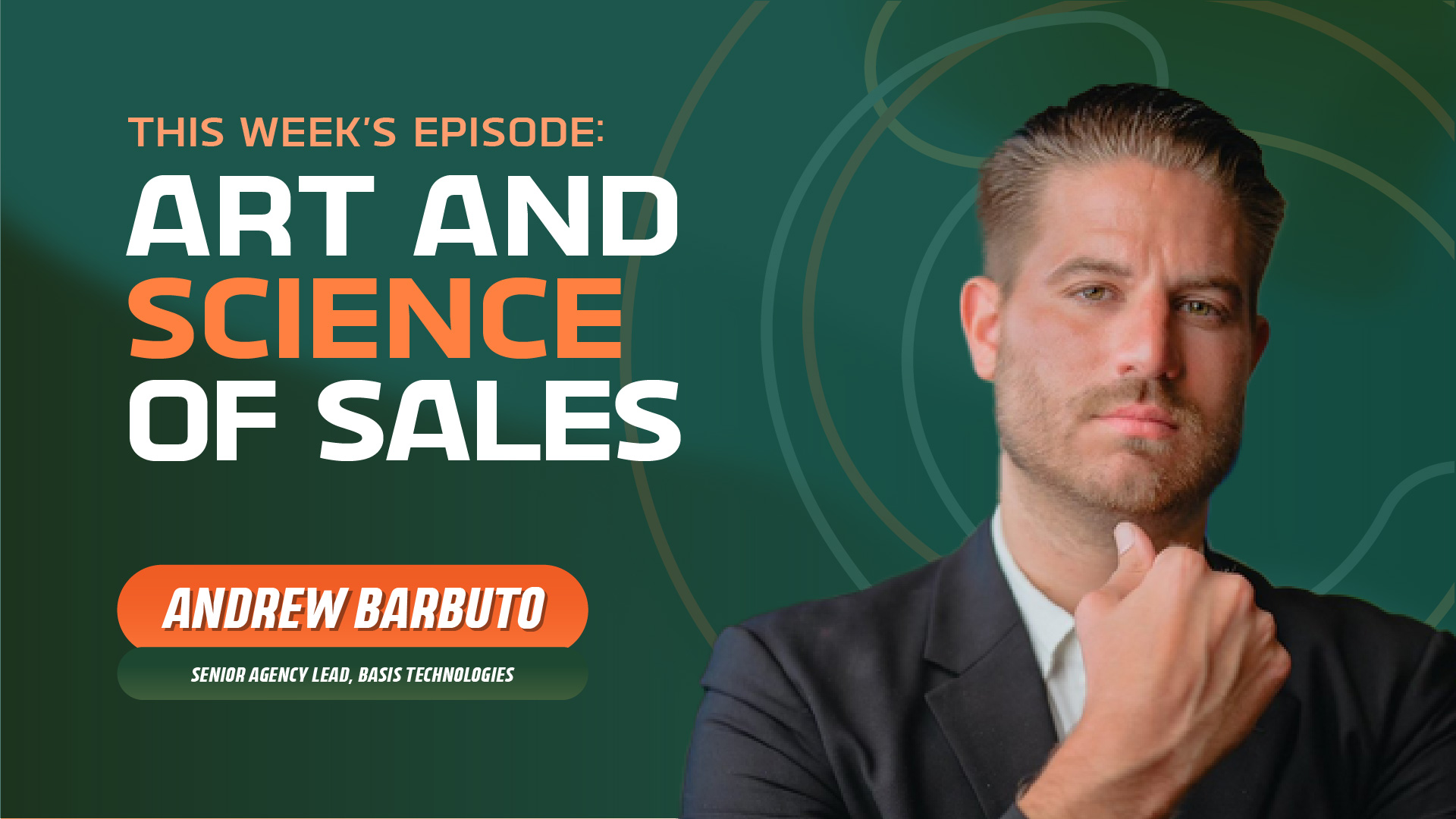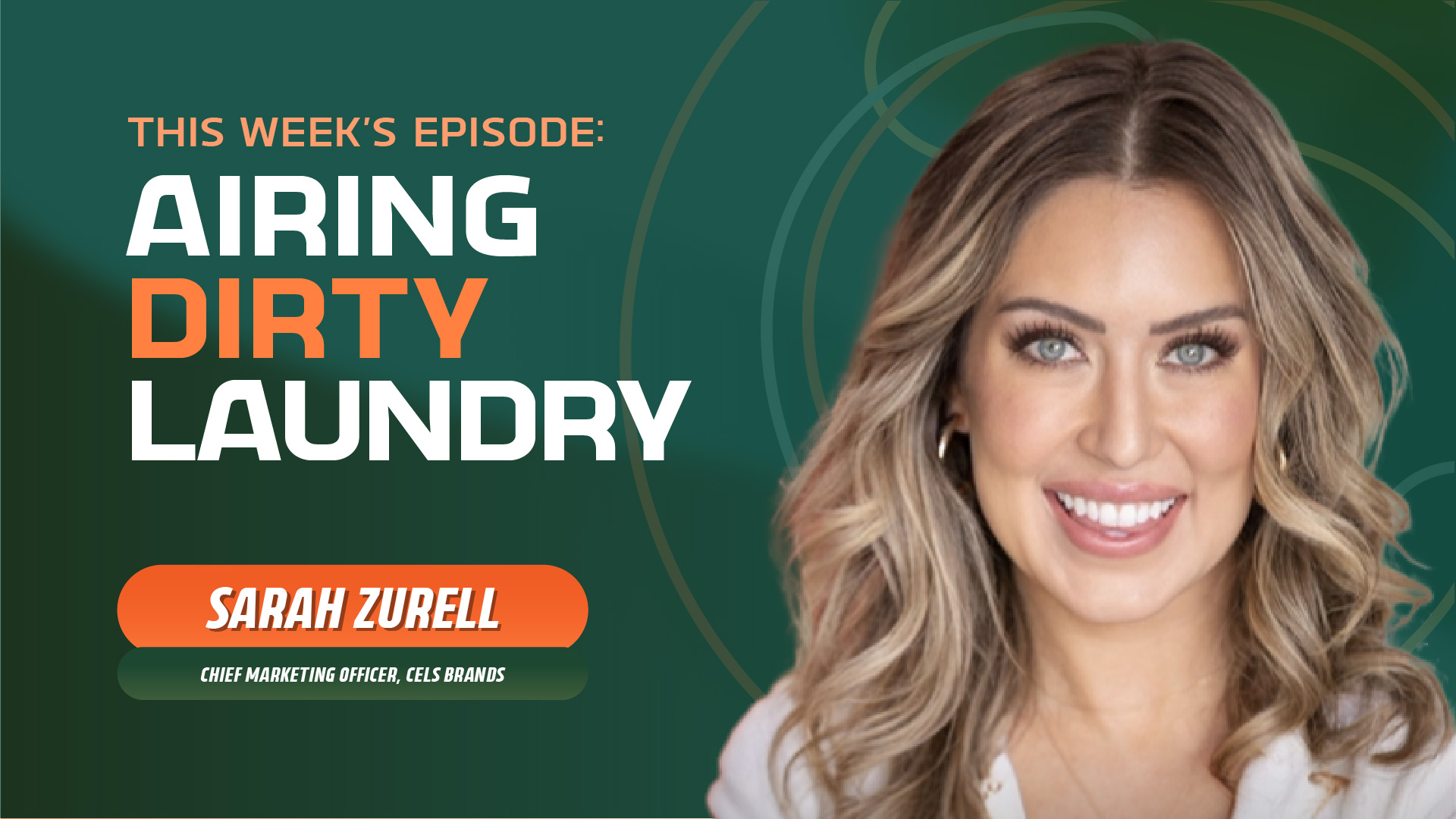Melissa Matlins (VP of Marketing B2B, Vimeo) - Audience and Understanding
- 0.5
- 1
- 1.25
- 1.5
- 1.75
- 2
Vin: Welcome to the Marketing Stir podcast by Stirista, probably the most entertaining marketing podcast you're going to put in your ear. I'm Vin, the associate producer here at Stirista. The goal of this podcast is to chat with industry leaders and get their take on the current challenges of the market, and we'll have a little fun along the way. In today's episode, Vincent and Ajay chat with Melissa Matlins, VP of marketing B2B at Vimeo. She talks about how the user experience has to be amazing, especially in a world of virtual events and streaming on video platforms. Ajay prepares for his trip to New York and native New Yorker, Vincent, won't get caught dead in Times Square. Give it a listen.
Vincent Pietrafesa: Ladies and gentlemen, welcome to another episode of Stirista's The Marketing Stir. I, of course, am your host, Vincent Pietrafesa, the vice president of B2B products and partnerships here at Stirista. This is The Marketing Stir. It is so great to be talking to you all again. I miss when I don't talk to you. I really do, because I enjoy talking. Just ask my co- host, he'll tell you. Ask my wife, she'll tell you as well. Let's pause for a moment and talk about Stirista. This is the only time we're going to talk about Stirista, ladies and gentlemen, so sit tight. Stirista, we are a marketing technology company. We own our own data, B2B, B2C. We help customers utilize that data to help target, get new customers. We own our own DSP, called AdStir. We can help you with connected TV, display. Email me, vincent @ stirista. com. That is how confident I am in our services, I just gave you my email. And also, just use that email for those purposes. People are emailing me for a lot of things. I'm not interested in your life insurance, because this is not what it's for. Also, but I do appreciate the suggestions. I love when you tell me a guest that you love, a book recommendation that the guest gives, it's been a blast. You know what else has been a blast? Almost three years working with this gentleman here, but I've known him for 12. Ladies and gentlemen, our co- host Mr. Ajay Gupta, the CEO of Stirista. What's going on, Ajay?
Ajay Gupta: Hey, Vincent. Yeah, I didn't realize it's been a long time. But look forward to seeing you next week in New York City.
Vincent Pietrafesa: Absolutely. You're coming up to the Big Apple, right? The head honcho, as I call you, is coming up to... I don't call you that, I just made that up. You're coming up to New York City. We love when you visit. Used to be more frequent, but the pandemic had put a stop to that. But now, we're going to get you an apartment here in New York City. Just brace yourself-
Ajay Gupta: Yeah, I don't-
Vincent Pietrafesa: ...brace yourself for the fee.
Ajay Gupta: ...I don't know if they still know me by first name at Refinery Rooftop. We'll have to change that if they don't.
Vincent Pietrafesa: Got to change it. They know you there. We will hit up the Rooftop. We will be at Bar Boulud, Boulud? I always get that name wrong, that's where we'll be. But yes, it is. So, you were surprised that it's been that long? Does it feel you've known me longer or shorter when I said that?
Ajay Gupta: No comments.
Vincent Pietrafesa: No comments. Well, yeah, that shows right there.
Ajay Gupta: No, it depends on the day. It depends on the day.
Vincent Pietrafesa: Depend... how much I annoy you for something. Yeah-
Ajay Gupta: No, no, I kid.
Vincent Pietrafesa: ... but we'recoming up on my three- year anniversary.
Ajay Gupta: Yeah. No, it seems like yesterday when I met you. You had that beautiful New York City office that we used to meet at.
Vincent Pietrafesa: Yes, on Broadway, 1350 Broadway was the address of that. I remember it. It was right near Harold Square, Macy's. Now, I don't want to be caught dead around that area as a native of New Yorker. Get me away from there, get me away from Times Square. But yes, now I'm in my amazing little office, in Downtown Manhattan here. It's just me representing. But yeah, happy to have you there. We're going to be meeting with some of our great partners, meeting with some new prospects and also having fun, having a little event in the process. But yes, it'll be good to have you up here. But yes, what else is good, Ajay? How's everything in San Antonio? It looked there was game night last night, little-
Ajay Gupta: Yeah a little bit-
Vincent Pietrafesa: ... team-building exercise.
Ajay Gupta: ...of a charades night and turns out Devins, Andrea, and Hunter Snell are exceptional. Somebody makes one little gesture and they know exactly what movie it is. So, I don't know, it seemed a little rigged. But I might just be-
Vincent Pietrafesa: It did seem rigged. I think they help organize it there. But no, that's part of our customer success team members. So, that is great. I love seeing that. I had a lot of fun doing game night when I was there. Those are important things. Those are important things. I'll tell you what else is important, these guests that we have, and this guest is no exception. I really enjoyed meeting her. She is also a native new Yorker. I hope to meet her in person very soon, but we are lucky enough, Marketing Stir audience, to have her now. She's the vice president of marketing, B2B, at Vimeo. Heard of Vimeo? You sure have. We're going to talk to her. We're going to talk about the company, her role. We're going to get into the nitty gritty, ladies and gentlemen. Please, a warm welcome to Melissa Matlins. What's going on, Melissa?
Melissa Matlins: Hi, everybody. Hey, Vincent and Ajay. Great to talk to you today.
Vincent Pietrafesa: It's great to talk to you. Thank you for joining us, Melissa. I already enjoyed meeting you. We already had some fun. We already talked shop and I'm so excited for our listeners to learn more about you as well as Vimeo, but let's get right to it there. I always like to get this right off the bat, because maybe those listeners out there tune us out. I doubt it, because we have such loyal, rabid fans, as evident of the coming up to me at conferences now. But Melissa, for those people who don't know Vimeo, well, A, I think you're living under a rock, but B, just tell people about Vimeo and tell people within your role. I love the B2B. I'm a B2B guy here at Stirista, so I love B2B. But talk to us about Vimeo and I'd love to learn about your role, specifically, there.
Melissa Matlins: Yeah, so I mean, lots of people know Vimeo. I think one of the most common things I hear is, " I love Vimeo, but I have no idea what you do," or" Aren't you like YouTube?" Our brand and what Vimeo is and does has evolved a lot because video's role in culture has evolved. So, video isn't just some form of expression or entertainment that we experience outside of work. It's very integral to our everyday work, particularly since the pandemic. And it changed, fundamentally, how we connect with our employees and connect with our customers. So, it's really now just table stakes for every business to be able to communicate effectively with video. And at Vimeo we have a whole platform and suite of tools that help people make, manage and share video in their business. So what I do here, that is very core to what I do here, I joined the company about three years ago. My focus has been, how do we quickly scale our global SaaS footprint with businesses at all sizes? We aren't historically known for these tools. So there's nothing that I love more than building campaigns that showcase how businesses can communicate with video.
Vincent Pietrafesa: I love it. So it sounds you're approaching your three- year anniversary as well, like me. That's awesome. Melissa, talk to us about, this is a fan- favorite question, how you got into marketing in the first place? And also, I'd like to add a little bit to that is, what's the appeal to you for the B2B aspect of marketing?
Melissa Matlins: Mm-hmm. So, I actually started my career in architecture. I came out of school, I started working in a firm and I think I realized very quickly that I love architecture and design, but it just wasn't, the actual process of doing the work just wasn't where my energy went. It probably doesn't help that your first jobs in that industry are detailing doors and windows and going over construction drawings. Doing that until you can prove that you're capable of doing something more meaningful. I mean, I think I was lucky enough to work in a firm that was part of a global competition system. So, this is really pitching a large construction project, a residential building, a cultural institution, a new stadium, and there's a very high stakes, high reward process for this. And to me, this was marketing and business development at its best. How do you sell the vision of a building that exists only on paper or in a napkin sketch, right? And I got very involved in that, very excited by that process. And I actually spent years doing marketing and business development in the architecture and design world before I eventually made the leap to software marketing. And I think ultimately what made me start to think about how I was going to transition my skillset from one to the other is, in architecture and design, when you build a building, it's a decade- long commitment, depending on the size of construction project you're looking at. So I would always say I got the best parts of the project, right? I got the beginning where you're setting the vision and figuring out what the messaging is going to be, and how you're going to sell it to the client and be reflective of their needs and all that good stuff, and then at the end, you come in to celebrate, right? But the pace of iteration and change, project by project, is very slow. And I think when I started to think about what really got me excited, it was that back and forth that you have with the market or, in that case, with your customer, understanding their needs and building something to fit that. So to me, I think a lot of the transferable skills were all around understanding your audience and understanding what product you had to offer and trying to figure out how you connect those two pieces together. And that really is the fundamental bridge that you're trying to build when you're in software and tech marketing. And I still use a lot of architectural analogies. It's-
Ajay Gupta: Thanks for that-
Melissa Matlins: ...the big holdover from my previous career.
Ajay Gupta: ...Yeah. Thanks for that fascinating background. I think it's the first architectural background we've had, so it's neat. So, coming to your current role, what are some of the marketing channels and strategies that you use and what have you seen work in the last three years you've been there?
Melissa Matlins: Mm- hmm. Yeah. I mean, we're focused on a few core audiences at Vimeo when we sell to businesses. So, marketers, communications professionals that sit inside of companies that connect with employees, and what we call a video monetizer, or people that have a niche that they know super well and they want to build a streaming channel to match and monetize their expertise. So, we find that our best marketing tool is our product. This is the fundamental blessing of a freemium product, right? There's so much that you can do on Vimeo today that is entirely free for businesses to try. And we have 260 million users that are putting our tools, our video tools, to work. So there's a ton that we can learn from how people are using the product and in applications and what's the next generation or the more advanced version of things that we can help them do? So, a lot of our marketing is focused on getting people and their teams to experience this power of video in their own business, even if it's something as fundamental as, I'm going to create a video and I'm going to use that on a social channel to advertise my business, or I'm going to embed that on a website. So, seeing how they're including video in their campaigns and in events in ways that they probably previously needed professionals to do, is the most rewarding part, I think, of what we try to do as marketers, is getting them to that initial experience of value. And then I think when we put together campaigns for these audiences, we always say, " Do we have an opportunity to show, not just tell, people what video can do?" So, this is why we use our own products every day to manage video, to share video, to make video. And it's also why we have a ton of events on our Vimeo platform as well, every month, every week, so we can showcase how we're doing it.
Ajay Gupta: So speaking of events, what are some of the key components of hosting a successful virtual event?
Melissa Matlins: Yeah, I mean, I think it's changed a lot. I think there was a pre- pandemic, during the pandemic, and post- pandemic fundamentals of virtual events, I would say. And there's a couple commonalities. What we will always see is content is always going to be really central to this experience, and it's why we devote so much time, energy and product to really making that content shine. And it's not necessarily what you're saying or what your speaker's saying or what your slides are showing, it's can I present my content in a richest possible way? Can I share a video, can I share live components? Can I share on- demand components? Can I bring people in from all over the globe if I want to? And can I make that content available, just technically, however my audience wants to consume it? And that looks so different from the way that people used to consume a virtual event. They would go, they would open their laptop and they would sit in front of the laptop and watch a webinar, typically live. Now, we've all been through three years of video, right? We all got an MBA in video in the last three years. And now, what we're finding is that people have lots of different ways that they want to incorporate content into their new work life. They may want to watch it on demand later on a connected TV. They may want to watch it on their phone, in parts, when they have time. They may want to join live, and they may want to join afterwards. They may want to just stay tuned for the highlight reel. And I think that we are seeing that people want that flexibility in how they consume, and the border between what people consider maybe an instructional video, or maybe a podcast, or maybe a live event is blurring a lot. I think that's actually a positive trend, because it allows us, as marketers, to reuse and remix content in a ton of different ways. But that's really critical to getting the mix right for the consumer. Just thinking of it as a virtual event that happens one time, and that if somebody attends, they see value. And any other way, they consume that content, they're not seeing value or we don't consider that intent, is probably not how we should be looking at that anymore.
Vincent Pietrafesa: And Melissa, talk to me about how Vimeo is continuing to build that footprint in business with businesses. I would love to hear that.
Melissa Matlins: Mm- hmm. Yeah. So, in the last couple months, we've launched a bunch of really exciting tools. I think the biggest and most exciting one for me was a new tool, called Vimeo Events, that we launched late last year. During the pandemic, I'm sure we all had a lot of thoughts and experiences with event products, both good and bad. We have all seen the data that shows, and probably personally experienced ourselves, that the number one challenge for attendees is often the technology. It can't get it to work, it doesn't work on my mobile device, it's not a great viewing experience, et cetera. We put a lot of energy and people time against this problem. And I think the reason that it was particularly intriguing to the Vimeo team is. because of our legacy as a consumer video platform, we knew that that user experience, the experience that somebody has when they're watching a video, needs to be really magical. It needs to work on every device, the video quality has to be high, and that's the bar that you need to hit in order to be able to have, secondarily, an amazing experience at a virtual event, right? And I think a lot of the products that we saw in the market failed on those fundamentals alone. When you're in some products and we're talking like this, and then I want to show you a video, that's not really possible or the sound quality may be bad, or a video may be jerky. So we had a lot of thoughts about how we could improve that experience. It all got baked into our Vimeo Events platform. My favorite feature in that platform is the ability to queue up or make a playlist that I can use to drive an event. So, we may start with a countdown slate, then do a live section of that event. Then bring somebody in who maybe couldn't make it that day or is located somewhere else for an on- demand piece. And then play videos as interstitials in between. And all of that, the building of that flow, is entirely accessible to any marketer. We jokingly say a CMO could do it, but I do think that's true.
Vincent Pietrafesa: Yeah. It's funny you say, there's nothing worse than being on a webinar or a virtual summit and someone saying, " And now, here's a video from Deborah, our CEO," and it's just jumbled and it's the worst. And it just ruins the whole flow of the seminar. It really does. And people are scrambling, sound is off. Yeah. that's a buzz kill. Definitely a buzz kill.
Melissa Matlins: And I mean, I think what was interesting about the pandemic is that there was a lot of empathy for marketers and for virtual events, particularly live events, that didn't go exactly as planned. That's still a very real thing. But I think what people realized over time is, if you take away the in- person component, this is what we have. And so, the confidence in your technology and your ability to communicate through video is a message in many companies, right? And so, we hear from a lot of companies today, particularly when it comes to employee communication, " I need my town halls to be flawless, because this is my opportunity to cascade a message about my strategy that I don't want interrupted by technical errors." Right?
Vincent Pietrafesa: Yeah, yeah. Exactly.
Melissa Matlins: "And I need my video to be crisp, and I need to be able to reach people in the field that aren't necessarily in the office or different time zones." And all of that just requires a level of sophistication with video and, frankly, a consumer level of sophistication with video that didn't exist before.
Vincent Pietrafesa: Exactly. You don't want things interrupted by technology. What is now very much acceptable, which I loved seeing, is it could be interrupted by dogs, cats, children. I love seeing that. Remember, years ago it was like, " Oh, no, the dog is, we got to get the dog out." " Oh, my son ran in." It's part of life now. But Melissa, you touched upon it, but I want to get it out there. Some of the common misconceptions about Vimeo. I'd love you to elaborate even deeper on that.
Melissa Matlins: Yeah. I mean, it's interesting. I think the most common misconception is we're a place where you can go to host video and view video and that kind of thing, like so many companies of our era. Vimeo's been around a long time. We have this really unique brand challenge where we, particularly with marketers, need to shift perception from a place where I can go to dump video to something that starts to solve real challenges that every marketer has. If I have one video that's been translated into 20 different languages and I need my 200 people across my marketing team globally to be able to access the right version of that, how do you do that? Right?
Vincent Pietrafesa: Exactly.
Melissa Matlins: And there's not, we're really the only full- stack video tool that can start to remove a lot of those friction points that you don't get when you don't have that end- to- end capability, where I can create video, I can create a very engaging viewer experience. And then I've also got a lot of productivity built in where I can have a hub where everybody can access that video. I can set privacy settings on that video. I can get more out of other video assets at my company, because I can keep those all in the same place and remix them when I want to. And I can also use those to collaborate with other people on my team, because we have review tools and transcripting, and other things that'll help make video more searchable and also editable. So, I hope that helps a little bit.
Vincent Pietrafesa: No, it definitely helps. Because some of the things out there, you think one thing of a company, you learn something else. We had a few companies on like that where, " Oh, people just know us for this, that records your shows." And it's like, " Well, no, it does other things, too." So I always love debunking, if you will, the concepts or the perception. So, that's very helpful. Melissa, what are some industries that are getting disrupted by video, you think?
Melissa Matlins: It's interesting. I feel I've done a lot of industry marketing in my career. And when I came to Vimeo, I was like, wow, there's not one vertical where we go deep. So, I roughly bucket into a couple different categories when we look at businesses. A big one now is distributed or remote workforce. So, we used to see this a lot with professional service organizations, where they have hundreds of thousands of consultants or brokers or realtors that work in branch offices. And it's very hard for companies to cascade messaging and strategy when you don't have people in one central HQ or location. That applies to almost every business now, where they have remote workforce that are sitting in homes or in distributed offices. There's also a lot of businesses that rely on frontline workforces, so retail or healthcare, where they have employees in the field and their employee base, or the vast majority of their employee base, doesn't sit in front of a computer. So, when you think about use cases like onboarding or training, or how to talk to that type of workforce about interactions with customers and how to equip them to handle, potentially, some of those customers' more technical needs, video is the great vehicle for that. But you need video that can go on any platform. So, they may not sit in front of a computer, but they typically have a cell phone and that's one way to reach them, or you can deliver it to a kiosk in a store or other... Video can go places that other training can't. And then I think the last piece of this is, how do you reach different segments of customers with messaging and segmentation that's specific to their use case at the right time? And if you look at use cases in regulated industries where that messaging is super critical to get right, whether it's because of a legal requirement or because of the other fundamentals of the business, financial services is a great example, healthcare or pharma is another one. You may need hundreds of different versions of the same thing that's trying to show something that is very intricate or super technical to partners in the field, to a healthcare provider. Video can be an amazing vehicle for that and it can also show and teach things that are just very, very difficult to accomplish in other ways. So, it really goes across a bunch of different industries, but I think we're seeing a bunch of dynamics now in those different buckets and market segments that are just causing and driving more need for video in more different places. And not just as entertainment, as something that you use to communicate with your customers. All of these different customer experiences and customer touchpoints are now being revolutionized by that.
Ajay Gupta: So, Melissa, one of the things that, kind of bringing you back, generally, to B2B marketing, which is a big area of your focus, what are some of the key areas or focuses that one should keep in mind when marketing to other businesses?
Melissa Matlins: Yeah, it's an interesting question. I think the biggest one that I always come back to is that businesses are people. You need to win the heart and mind of somebody who sits inside of a company, and there's a lot of similarities with consumer marketing in that way. You need to deeply understand that audience, you need to understand their motivations and you need to understand their life beyond the software product that you're trying to sell them. Right? I think that's particularly important when you look at an audience, like marketers, where the last thing that they need is another tool. They're there because they want to understand how they can have business impact at their company, grow their company and figure out, find a way to add more value for their users and their customers. And when you come in talking about that from a feature- level perspective, it typically doesn't resonate. They're in the business of buying results. So, I do think that what I see pretty often is a disconnect between what a company's trying to say, like, " This is what my tool is and does," and the result that the person that sits inside of that business is actually trying to achieve.
Ajay Gupta: Yeah. And do you generally find businesses are receptive to videos or is it still challenging to just sell them on the value of videos?
Melissa Matlins: It's an interesting question. I think that professional video, today, is still super hard and super expensive, right? And even if you're a Fortune 500 company, you probably believe that video is still too hard to do, right? So, if you look at pro- quality video, you're thinking, " This is going to take weeks to make. It's going to cost thousands of dollars. I'm going to have to shoot this and upload it, and collaboration is super inefficient. And if it's an event, I need expensive hardware for that." I think it's part of the reason that Vimeo exists. Our fundamentals is a business, whether it was way back when, when we were the little video hosting platform that could, and now, when we think of ourselves as we're this global SaaS business, our whole goal is to build things that remove that friction and make video easier and more effective for businesses. And if you let that guide all of your decision- making, what we're really trying to do is remove the fundamental challenge in video marketing, which is, I don't do it because I find it too hard to execute.
Vincent Pietrafesa: Melissa. I would love to understand, and I hope there's a time that I don't have to keep asking this question, but in Vimeo's case, I really would love to understand how has the pandemic affected Vimeo?
Melissa Matlins: Mm- hmm, mm- hmm. Well, pretty much right off the bat, we saw a ton of demand. And I think what was most exciting to see was the creativity that came to blossom out of that time because people went from videos are nice to have for my business, and it's something that I've played around with, to video's now fundamental to my business. In some cases, if I'm a fitness studio or a tech company that did a lot of in- person marketing, it's now the core of my business, right? It's core to how I reach audiences, and it's going to be core to how I connect with my employees. And I think what we saw a real outpouring of creativity there, that was probably one of the most rewarding experiences in my professional career. I think that we saw people use video to go to market in new ways. And I think there were a lot of things that got me really excited that were just more mundane video use cases that don't get celebrated as much. Right? So many companies came to us and said, " I had to figure out how to train a thousand employees every week and I used to do that all in person, and in six weeks, we transitioned all of that to video and we're never going back."
Vincent Pietrafesa: I love that. I love hearing that. And yeah, video, and it plays such, now does even more, an important role. I would love to understand, you mentioned it in the beginning of the podcast, too, some of the campaigns that you work on, but what's been one of your favorite campaigns that you worked on at Vimeo?
Melissa Matlins: Mm- hmm. We actually just wrapped an event that was really exciting to me, called Outside the Frame, and it was an event for marketers that celebrates all of the different ways that they use video in their campaigns. And I think, think through how video can better connect them to audiences. And so, the thing that was really exciting for me about this particular event was, we really wanted to center it around all of the amazing things that marketers do that exist outside of that perfect little video frame that you see in the ad and that you see in the event. It's like, right outside of that frame, there's a stack of books that's supporting the camera and the lighting that's a little out of... and your kid that's knocking at the door. I think there's something so amazing to me about all of the creativity that goes into marketing moments that doesn't get seen, right? And particularly with video. So, this was probably one of the first events where we actually had filmed it in person again in our offices, and it was exactly the premise of the event. When I went down to see the setup, there's eight cameras and 20 people, and then this beautiful stage where you see none of that effort, right? But yeah, I think that's part of the reason that why it was so exciting to me. It was great, too, I think, to see thousands of marketers join us, start to share LinkedIn profiles with each other. That's the community that we want to be sure that we're facilitating, in addition to all of the other things that we can help people do with video.
Ajay Gupta: So, one of our staple questions is around messages people receive on LinkedIn. And so, the question is, what's a message that gets your attention? And what's one that really annoys you?
Melissa Matlins: A message that gets my attention is, I listen to your earnings call or I read your 10- K. I will open those every time. I mean, if right after this podcast airs, if I get a flood of messages of people saying, " I listened to your earnings call and here's how I think I could help you," I would actually be thrilled.
Vincent Pietrafesa: Oh, nice. That is a first, that messaging. I didn't know where you were going to go with that. Wow.
Melissa Matlins: So that always gets my attention, because that says somebody did their homework to learn about the business and to understand what might actually help us. Right? And I also think, I've managed sales development folks in the past. I feel like I know that role really well. And one of the most valuable things that you can do in that role is be a student of businesses, because the more you learn about who you're selling to, what their motivations are and how their businesses work, the more successful you will be as a salesperson every time. So, when I see those messages, I also think, " Not only does this person do their homework, but they're going to be an amazing salesperson one day." Right? If they're doing this for even half the leads that they're reaching out to, they've got this. So that always gets my attention. One that I hate? " I want to connect with you for networking purposes." It's like-
Vincent Pietrafesa: No. Not even inaudible.
Melissa Matlins: Sure. But isn't that, that's why we're all here.
Vincent Pietrafesa: You mean, you're going to send me a message in 13 seconds after I-
Melissa Matlins: Yeah. Did you add some value with that?
Vincent Pietrafesa: ... after I connectwith you, yeah.
Melissa Matlins: Yeah. Yeah. But I mean, I think it just goes back to knowing your customer, knowing your audience, and understanding what's motivating to them, right? It doesn't necessarily need to be a long message. Nobody has time to read a five paragraph essay about the business. But I do think that if there are clues everywhere about what motivates people and how businesses work, I always say that I'm an open book. If you want to learn about me, you can go to any of my social profiles and understand a lot about what motivates me and what I'm interested in. And I think the most effective messaging is always going to be things that are resonant with your audience, and that's what I look for.
Vincent Pietrafesa: Yeah. No, I love hearing that. And I share within, " Let's just network." I'm like, " Meet me at a networking event and we'll network." Because I'm onto you. You're going to message me very quickly after. I like that, the earnings call. That is a first. Melissa, final question you said what motivates you there on LinkedIn, on the social media side, what about in real life? What are your hobbies, interests? You and I were talking kiddos before. Let us know.
Melissa Matlins: Yes. Yeah. I always feel this is a very hard question to answer, because I think, especially when kids are young, you end up not having a lot of your own personal hobbies. But if I think about the hobbies that I have through them, I think it's been actually been quite fun to rediscover a lot of the things that I remember getting really excited about as a kid. Right? My older child is six and she's really getting to know and discover more about the natural world and what principles of science drive that world, right? And so, we have fascinating conversations about this, and we'll do science experiments. She's very curious about condensation and what's in the atmosphere and how does it work? And I think it's just exciting to revisit some of those questions, because you realize how much experimentation goes into what they see. And it just, it reminds me of everything that gets me excited to learn new things. Right? So, yeah, I don't know. We do a lot of science experiments together. I'd say that's probably my hobby right now.
Vincent Pietrafesa: That's awesome. Yeah. My five- year- old does the same. Have a five and two- year-old and just watching him with Legos. And then also, like you said, reliving things, going and watching movies like the Ghostbusters and The Karate Kid. It's reliving those moments, like, " Oh, I remember where I was," whatever it was. That's awesome, Melissa. Thank you for sharing that. Thank you for sharing your story, the Vimeo story. We really do appreciate your time here at the Marketing Stir. That's Melissa Matlins, the vice president marketing, B2B, at Vimeo. I'm Vincent Pietrafesa, that's Ajay Gupta, New York city bound. And this has been the Marketing Stir. Thank you so much for listening. Talk soon.
Vin: Thanks for listening to the Marketing Stir podcast by Stirista. Please like, rate and subscribe. If you're interested in being a guest on the podcast, please email us at themarketingstir@ stirista. com. And thanks for listening.
DESCRIPTION
Vincent and Ajay chat with Melissa Matlins, VP of Marketing B2B at Vimeo. She talks about how the user experience has to be amazing, especially in a world of virtual events and streaming on video platforms. Ajay prepares for his trip to New York, and native New Yorker Vincent won't get caught dead in Times Square.
Today's Host
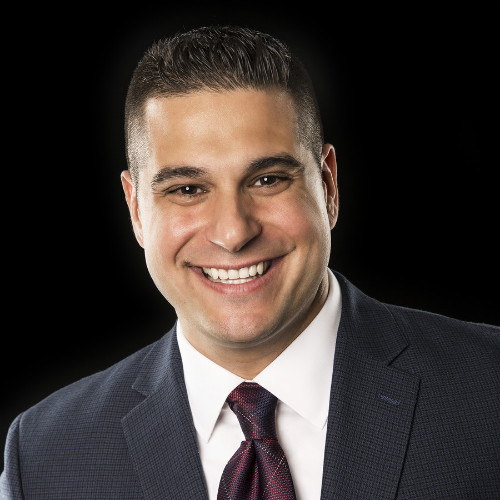
Vincent Pietrafesa

Ajay Gupta
Today's Guests
